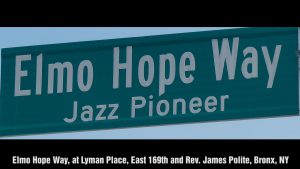Five great new titles plus further explorations of four songs through new editions and recordings. Plus, all nine now have Minus You audio tracks, providing fun and valuable learning opportunities for all instrumentalists.
Take a little time to explore our Minus You editions and tracks. Our tracks give every member of the group an individual audio track minus their instrument: you can be an essential member of the group playing along with professional artists in your own practice room. Minus Melody, Minus Piano, Minus Bass, Minus Drums, and often a track with just Bass & Drums, so Piano/Vibes/Guitar can play the melody, or a soloist can work, a la Sonny Rollins, without harmonic accompaniment. Click on FEATURES, click the Minus You heading, then click on FOR INSTRUMENTALISTS.
KENNY DORHAM: One of the magical things that sets Kenny Dorham apart from other composers is his emphasis on specific roles for each rhythm section player. His independent instrumental parts mandate delicate interplay between all ensemble members, hence our project title The K.D. Challenge. We've made each rhythm section part double-staved, showing a smaller melody staff above each line, and we've also indicated other rhythm section cues to make it clear how everything fits together.
BACK ROAD by Kenny Dorham: With its bluesy melody and rhythm section stop-time, this song is quintessential K.D. Second parts from the Joe Henderson/Kenny Dorham "Our Thing" album are available, plus our K.D. Challenge version has Minus You tracks for all instruments.
PEDRO'S TIME by Kenny Dorham: A classic Dorham song with a 12-measure form that's not quite a blues. Our K.D. Challenge version has Minus You tracks for all instruments; second parts like saxophonist Joe Henderson played with Kenny on the classic "Our Thing" album are available.
FREDDIE REDD: A pianist/composer who got early recognition from the his role in "The Connection" play and movie, Freddie is a master of hard bop. Our Freddie Redd Project recordings, with Minus You audio tracks, brings his music into a new zone.
1:00 A.M. STANDARD TIME by Freddie Redd: Starting the melody with an even-8th line which becomes its own important motivic element, this song essentially has a classic hard-bop sound, with stop-time figures in the head and a constantly evolving melody and chord progression. Our exclusive version has Minus You tracks for all instruments as well as second parts
BLUE HOUR by Freddie Redd: A harmonic workout in the unique Freddie Redd style. Recorded twice by Freddie in a trio format, our exclusive Freddie Redd Project quintet recording is available with Minus You tracks for all instruments, plus second parts, bass part & condensed score.
FAREWELL TO SWEDEN by Freddie Redd: A tribute to his 1956 trip to Sweden is a laid-back, bittersweet medium swinger. In addition to the original trio recording, a new quintet version is available with Minus You tracks.
GIGI GRYCE: Gigi Gryce was a fine altoist in the 1950s, but it was his writing skills, both composing and arranging that were considered most notable. We have Minus You versions of some of his best songs.
MINORITY by Gigi Gryce: Gigi's standard is represented by three different recordings. Art Blakey's in 1954, Gigi's own in 1960, and our version recorded in 1999, featuring Gigi's pianist Richard Wyands and alto/tenor soloists Bobby Porcelli and Ralph Moore. Minus You audio and more!
SALUTE TO BIRDLAND by Gigi Gryce is written on I'll Remember April changes. Our new Gigi Gryce Project version is available with Minus You audio tracks for all instruments. Perfect for an audition tape.
SOCIAL CALL by Gigi Gryce has been covered by many artists. Check out the four versions we have posted: Art Farmer/Gigi Gryce, Art Blakey and a nonet, Donald Byrd/Gigi Gryce, and our own version with Minus You tracks from The Gigi Gryce Project recording.
ELMO HOPE and MINOR BERTHA: Our first Rhythm Section Workshop edition. It's definitely a real workout for rhythm section players, demanding everyone's full attention at all times. Listen to Elmo's original recording and you'll see it was also a workout for his rhythm section. Try it on your own with our Minus You tracks or challenge your own group.


